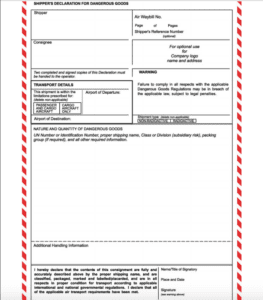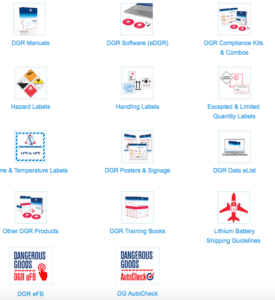
Shipping hazardous materials and wastes come with their own sets of regulations that must be strictly adhered to, or your facility can risk many fines. In our blog, Top 7 Reasons Your Hazardous Waste Management is Out of Compliance, we discuss the many regulations that go into ground shipments. Although many of these regulations apply to shipping via air, air shipments are much more strict and come with their own terminology. Rather than shipping “hazardous materials,” it is called shipping “dangerous goods.”
Dangerous Goods Regulations
Due to the dangers that could come with carrying dangerous goods on a flight with persons on board, the regulations are strict but for good reason. Depending on what the material is, there could be regulations restricting it from being shipped via air or could just simply determine how the shipment should be packaged. The dangerous goods regulations (DGR) are standards that have been created by the International Air Transport Association (IATA).
Shippers Declaration for Dangerous Goods
In order to ship dangerous goods, consignors are required to prepare a form certifying that the cargo has been packed, labeled and declared according to IATA Dangerous Goods Regulations (DGR). By completing this declaration for dangerous goods, a shipper is signing an agreement that’s stating that they will take liability if something was not properly packaged or there is an issue with the shipment of it.

Training Programs
IATA worked with the ICAO Dangerous Panel and adopted a Competency-Based Approach for dangerous goods training. This allows all parties in the dangerous goods training to get familiar with proposed changes. These trainings are required and ensure professionals have the tools and resources to transport dangerous goods safely. A party must have received adequate training meeting IATA training guidelines every two years to be allowed to ship dangerous goods. Shipping dangerous goods via air cannot be done by a party that does not have a relationship with companies like FedEx, and the only way for a party to get an account is to have the required training. Below shows some of the many reading materials and aspects that go into shipping dangerous goods and becoming trained.

